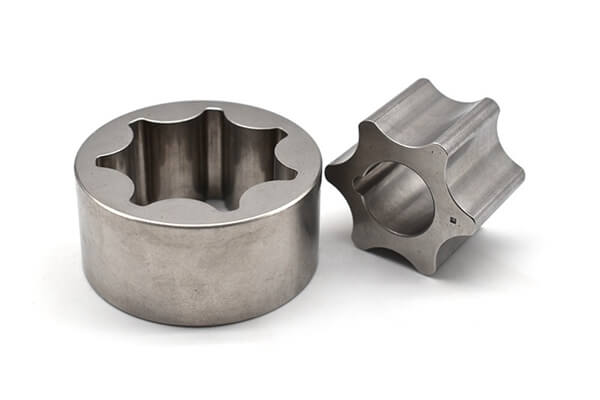Enhancing Tool Longevity and Performance with Metal Injection Molding: A Focus on Power Tools
Metal Injection Molding (MIM) has revolutionized manufacturing by enabling highly durable, precise, and complex metal parts. This technology is especially valuable in the power tool industry, where performance and longevity are crucial. This blog explores how MIM significantly improves power tools, from careful material selection to advanced manufacturing processes and specialized surface treatments.
Advantages of Metal Injection Molding in Power Tools
Enhanced Durability and Extended Tool Life Power tools must endure extreme stress and harsh conditions. Utilizing the Metal Injection Molding process, manufacturers produce components capable of withstanding intense operational demands, significantly extending tool lifespan and reducing maintenance costs.
High Precision and Consistent Quality MIM provides exceptional precision and consistent dimensional accuracy. Unlike traditional machining, MIM parts achieve tight tolerances efficiently, ensuring reliable performance. Such precision is comparable to CNC machining prototyping, offering predictable, high-quality outcomes across production batches.
Ability to Produce Complex Geometries Conventional metal manufacturing often struggles with intricate designs. MIM surpasses these limitations, effortlessly creating complex shapes, intricate internal channels, and detailed features without compromising strength, resulting in ergonomic and efficient tool components.
Cost Efficiency and Material Savings MIM significantly reduces production costs by maximizing material use and minimizing waste. The process integrates several manufacturing stages into a single streamlined operation, optimizing both time and cost efficiency.
Metal Injection Molding Manufacturing Process
Understanding the MIM production stages demonstrates why it’s particularly suitable for power tool manufacturing:
Feedstock Preparation The MIM process starts with creating a homogeneous feedstock, blending fine metal powders with binding agents to achieve ideal consistency for molding.
Injection Molding The prepared feedstock is heated and injected under high pressure into precision molds, closely mirroring techniques used in plastic injection molding. This step forms complex geometries with high accuracy.
Debinding After molding, the binding agents are carefully removed through chemical or thermal debinding. This crucial step ensures dimensional accuracy and structural integrity.
Sintering Debound components undergo sintering at high temperatures, consolidating metal particles into dense, fully metallic parts that offer superior strength and durability, which is ideal for heavy-duty applications in power tools.
Materials Used in MIM for Power Tools
Material selection significantly impacts power tool performance, durability, and reliability:
Stainless Steels:
17-4 PH: Known for excellent mechanical properties, corrosion resistance, and high strength, suitable for demanding environments.
316L: Offers superior corrosion resistance and strength, ideal for tools exposed to moisture and variable conditions.
420 stainless steel: Noted for its hardness and wear resistance, excellent for high-stress tool applications.
Tool Steels:
M2: Exceptional wear resistance and toughness, ideal for cutting and drilling components.
D2: Renowned for high hardness and abrasion resistance, suitable for demanding cutting edges.
H13: Offers excellent toughness and heat resistance, suitable for tooling components subjected to thermal stress.
Tungsten Alloys:
Tungsten alloys provide unmatched strength and density, which is crucial for robust components like drill bits and impact tools.
Surface Treatments for Enhanced Performance
Surface treatments further amplify MIM components’ durability, corrosion resistance, and performance:
Heat Treatment: Processes like hardening and tempering significantly increase toughness and wear resistance, enhancing tool lifespan and reliability.
Surface Coatings:
Black Oxide: Improves corrosion resistance and appearance and provides lubricity.
Physical Vapor Deposition (PVD): Enhances hardness and wear resistance and extends component lifespan.
Electropolishing: Offers smooth, clean surfaces, improving aesthetic appeal and functionality.
Key Considerations in Power Tool MIM Production
For maximizing the benefits of Metal Injection Molding, critical factors must be considered:
Design Optimization Leveraging MIM’s strengths—such as complex internal structures and shapes—optimizes tool performance and reduces production costs.
Material and Treatment Selection Selecting appropriate materials and surface treatments based on specific operational requirements ensures maximum durability and effectiveness of finished components.
Ensuring Quality and Precision Maintaining strict quality control and precision checks throughout production ensures uniform product quality, reliability, and performance.
Managing Manufacturing Challenges Challenges such as dimensional accuracy post-sintering or distortion during debinding are effectively managed through carefully controlled processing and precise mold design.
Conclusion
Metal Injection Molding significantly enhances power tool longevity and performance through precision manufacturing, robust material options, and advanced surface treatments. As MIM technology evolves, it promises further improvements, helping manufacturers produce power tools of higher quality, durability, and cost-effectiveness.
FAQs
What makes Metal Injection Molding ideal for manufacturing power tool components?
How does MIM improve the durability and reliability of power tools?
What types of materials are most commonly used in MIM for power tool manufacturing?
Which surface treatments are recommended to enhance power tool component performance?
Are MIM-produced power tool parts cost-effective compared to traditional manufacturing methods?

